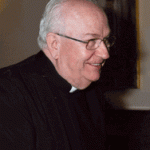Politics
Vatican City Politics
This page explores Vatican City political structure incorporating real-time RSS feed news and videos. By harnessing the power of RSS feeds, visitors can stay informed about the latest developments in Vatican City politics as they happen. The dynamic nature of these feeds ensures that users receive up-to-the-minute updates on political events, policy changes, and significant milestones, enabling them to stay abreast of the ever-evolving political scene.

Fernando Vérgez Alzaga
President of the Governorate of the Vatican City State
President of the Pontifical Commission for the Vatican City State
Image credit
The pope is elected in the Conclave, composed of all the cardinal electors (now limited to all the cardinals below the age of 80), after the death or resignation of the previous Pope. The Conclave is held in the Sistine Chapel, where all the electors are locked in (Latin: cum clave) until the election for which a two-thirds majority is required. The faithful can follow the results of the polls (usually two in the morning and two in the evening, until election) by a chimney-top, visible from St. Peter’s Square: in a stove attached to the chimney are burnt the voting papers, and additives make the resulting smoke black (fumata nera) in case of no election, white (fumata bianca) when the new pope is finally elected. The Dean of the Sacred College (Cardinale Decano) will then ask the freshly elected pope to choose his pastoral name, and as soon as the pope is dressed with the white cassock, the Senior Cardinal-Deacon (Cardinale Protodiacono) appears on the major balcony of St. Peter’s façade to introduce the new pope with the famous Latin sentence Annuntio vobis gaudium magnum: habemus papam (I announce to you a great joy: We have a Pope).
The term “Holy See” refers to the composite of the authority, jurisdiction, and sovereignty vested in the Pope and his advisers to direct the worldwide Catholic Church. It is therefore quite distinct from the Vatican City state, which was created in 1929, through the Lateran treaties between the Holy See and Italy. As the “central government” of the Catholic Church, the Holy See has a legal personality that allows it to enter into treaties as the juridical equal of a state and to send and receive diplomatic representatives. It has formal diplomatic relations with 179 nations.[3] The State of Vatican City, for its part, is recognized under international law as a sovereign territory. Unlike the Holy See, it does not receive or send diplomatic representatives, and the Holy See acts on its behalf in international affairs.
Pope Francis invited 44 transgender men to have lunch with them in the Vatican. pic.twitter.com/3pOeTh6TBx
— Real Mac Report (@RealMacReport) November 22, 2023
Unless other sources are listed, original content is provided by ChatGPT. ChatGPT may produce inaccurate information about people, places, or facts. #Vatican City #Vatican CityPolitics #Vatican CityNews #Vatican CityNewsToday #Vatican CityRSSFeed #BlahFace


